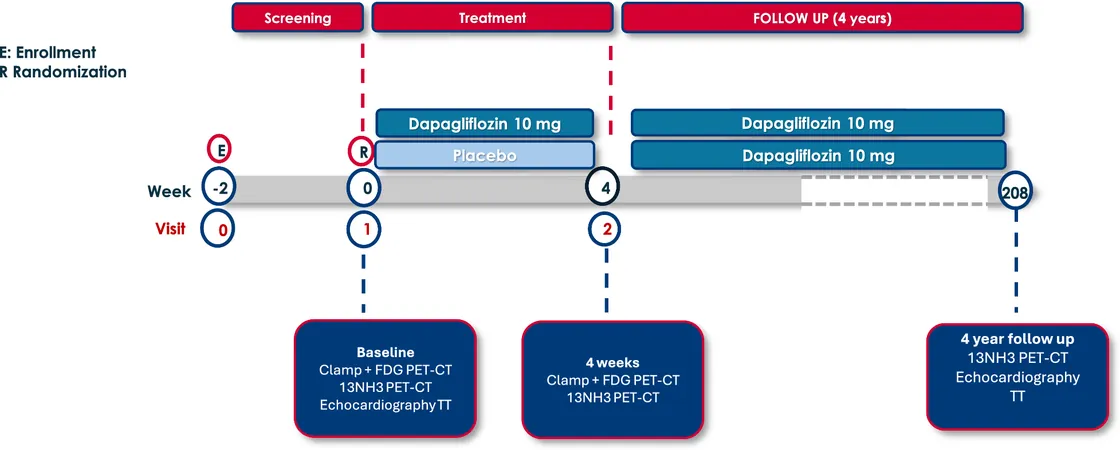
Revolutionary 3D-Printed Auxetic Sensors Set to Transform Wearables and Robotics
2025-09-01
Author: Mei
A Breakthrough from SEOULTECH
A groundbreaking innovation from SEOULTECH (Seoul National University of Science and Technology) is poised to reshape the landscape of wearable technology and robotics. This cutting-edge advance tackles the significant hurdles associated with integrating Additive Manufacturing and Metamaterial (AMM) technology. Its incredible versatility opens the door to applications in tactile sensors for robots, prosthetics, wearables, and healthcare monitoring.
High-Tech Tactile Sensing Platform
Detailed in the prestigious journal, Advanced Functional Materials, the research team has developed a tactile sensing platform that employs 3D-printed auxetic metamaterials. These sensors operate in two distinct sensing modes: capacitive and piezoresistive. The capacitive mode responds to pressure by modulating electrode spacing and dielectric distribution, while the piezoresistive mode utilizes a network of carbon nanotubes that change resistance under load.
Unmatched Sensitivity and Performance
Leading the research, Mingyu Kang explained, "Our technology harnesses a unique negative Poisson’s ratio behavior that leads to inward contraction under compression. This effectively concentrates strain in the sensing region, improving sensitivity. Moreover, our auxetic design maximizes sensor performance by enhancing localized strain concentration, ensuring remarkable stability within confined structures and minimizing crosstalk between neighboring sensors."
Enhanced Wearability and Reduced Interference
Unlike traditional porous designs, this innovative structure curtails lateral expansion, ensuring greater comfort and reducing interference when embedded in smart devices like insoles or robotic grippers. Plus, thanks to digital light processing-based 3D printing, the team achieved precision in structural programming, allowing customization based on sensor geometry without altering the fundamental materials.
Proof-of-Concept Successes
The research team has successfully demonstrated two proof-of-concept applications: a tactile array designed for spatial pressure mapping and object classification, alongside a wearable insole system equipped for monitoring gait patterns and detecting pronation types.
Broad Applications for Smart Technology
Dr. Soonjae Pyo, an associate professor at SEOULTECH, emphasized the sensor's game-changing potential for integration into smart insoles for gait monitoring, robotic hands for intricate object manipulation, and wearable health systems that prioritize unobtrusive sensing in everyday life. He asserted, "Crucially, the auxetic structure maintains sensitivity and stability even within rigid environments, where traditional porous lattices typically falter."
Future of Wearable Electronics
Looking ahead, the research team predicts that auxetic-structured 3D-printed tactile sensors will be instrumental in the next generation of wearable electronics, facilitating continuous, high-accuracy monitoring of movement, posture, and health indicators. Their adaptability and material independence promise the development of custom-fit sensors tailored for personalized medicine, advanced prosthetics, and immersive haptic feedback experiences.
A New Era in Consumer Products and Robotics
As additive manufacturing becomes more widely accessible, we might soon see mass-customized tactile interfaces with programmable performances becoming commonplace in consumer goods, healthcare solutions, and robotic systems. This breakthrough is not just a step forward; it’s a leap into a new era of technology.


 Brasil (PT)
Brasil (PT)
 Canada (EN)
Canada (EN)
 Chile (ES)
Chile (ES)
 Česko (CS)
Česko (CS)
 대한민국 (KO)
대한민국 (KO)
 España (ES)
España (ES)
 France (FR)
France (FR)
 Hong Kong (EN)
Hong Kong (EN)
 Italia (IT)
Italia (IT)
 日本 (JA)
日本 (JA)
 Magyarország (HU)
Magyarország (HU)
 Norge (NO)
Norge (NO)
 Polska (PL)
Polska (PL)
 Schweiz (DE)
Schweiz (DE)
 Singapore (EN)
Singapore (EN)
 Sverige (SV)
Sverige (SV)
 Suomi (FI)
Suomi (FI)
 Türkiye (TR)
Türkiye (TR)
 الإمارات العربية المتحدة (AR)
الإمارات العربية المتحدة (AR)